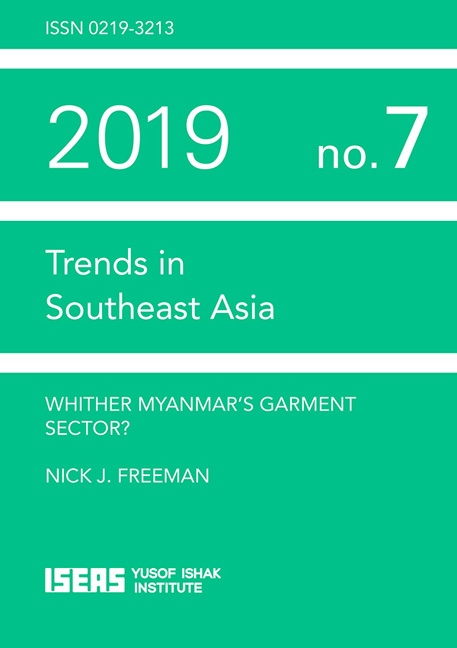Whither Myanmar's Garment Sector?
Published online by Cambridge University Press: 24 January 2020
Summary
MYANMAR's GARMENT SECTOR AND THE EU's THREAT TO SUSPEND GSP PREFERENCES
In 2013 Myanmar was reinstated into the EU Single Market's “Generalized Scheme of Preferences” (GSP), under which goods from the country — and forty-six other least developed countries — may enter the EU duty- and quota-free, in conformity with the “Everything But Arms” (EBA) trade scheme. This followed the positive progress that Myanmar had recently made in transitioning away from a military-led government, and served as “recognition of [Myanmar's] efforts to launch ambitious political, social and labour reforms”. However, in October 2018, following a fact-finding mission to Myanmar, the EU cautioned that Myanmar's GSP privileges might be suspended because of “deeply worrying developments highlighted in various United Nations reports, in particular as regards human rights violations in Rakhine, Kachin and Shan States and concerns around labour rights”.
In 2017, Myanmar exported goods to the EU collectively valued at €1.55 billion, of which the largest proportion by far, 72 per cent, was ready-made garments. Not coincidentally, one of the few manufacturing sectors to display significant growth in Myanmar over the last five years has been the garment sector. Some of that growth has been domestically generated, but a significant proportion stems from foreign investment in the sector, bringing in not just capital, but also non-financial inputs, such as global industry knowledge and expertise, and the all-important networks and relationships with international buyers.
Thus, the dynamics that lie behind Myanmar's recent garment sector growth is multifaceted, and comprises the following elements:
• Significant foreign investment inflows from Asian manufacturing companies (such as those from China and South Korea), leading to newly established export-oriented garment factories in Myanmar, and particularly in and around Yangon's industrial zones.
• A marked reduction in the number of domestically owned garment companies in Myanmar, which are unable to compete and therefore effectively shut out of the export market. Most are typically left supplying cheap garments and uniforms to the relatively modest domestic market.
• An increase in export volumes for garments, principally to the EU, that is partly dependent on GSP privileges that allow Myanmar-based (but not necessarily Myanmar-owned) garment producers to compete with overseas rivals on the in-store prices for garments sold in the EU market.
- Type
- Chapter
- Information
- Whither Myanmar's Garment Sector? , pp. 1 - 18Publisher: ISEAS–Yusof Ishak InstitutePrint publication year: 2019



